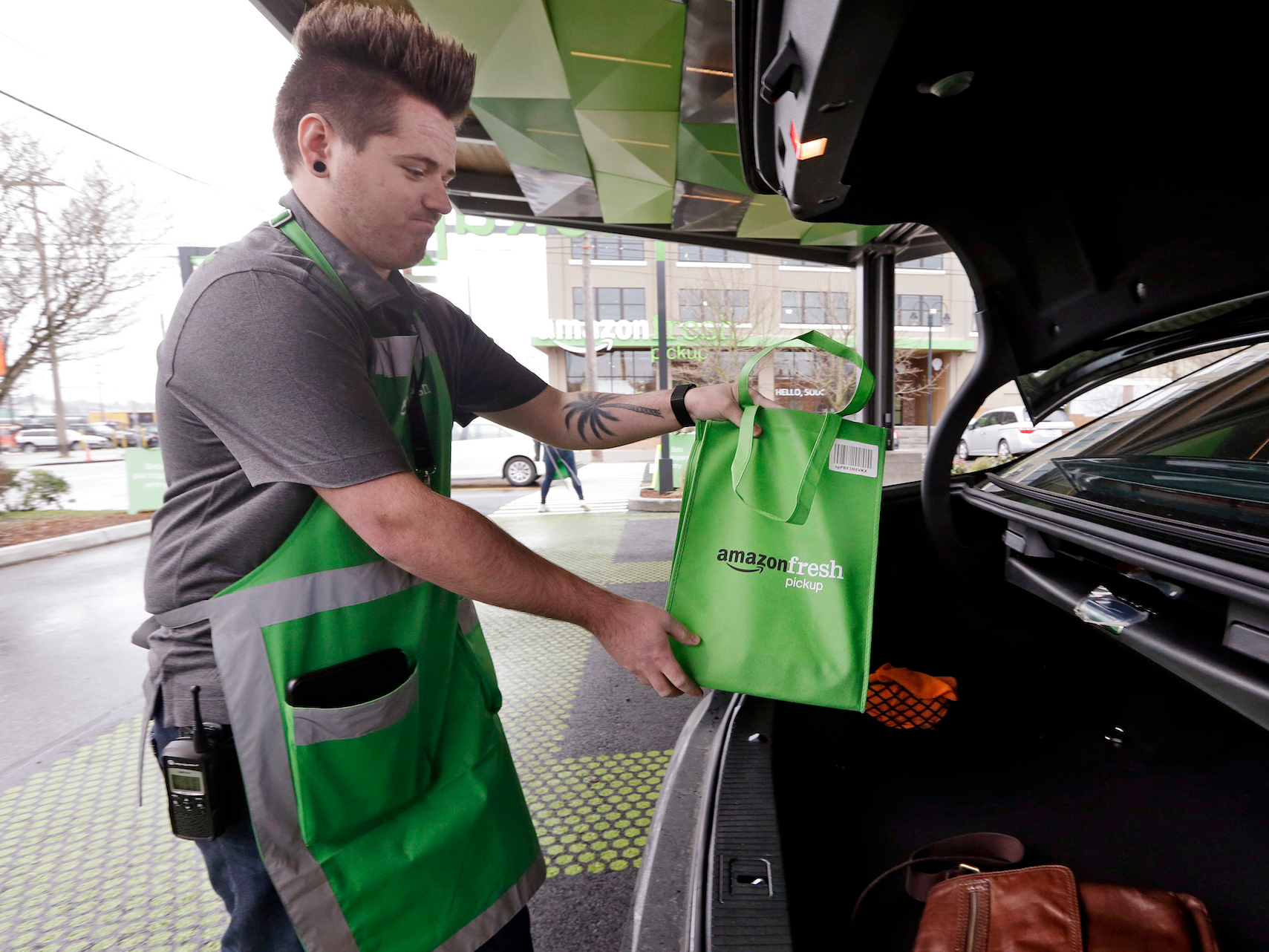- Amazon is temporarily waitlisting all new grocery-delivery customers to meet a surge in demand.
- The company announced Sunday that new Amazon Fresh and Whole Foods customers will need to request an invitation to use the company’s online ordering services.
- The change is one of several Amazon is making to help its overwhelmed workers and infrastructure meet demand amid the coronavirus outbreak. Amazon is also increasing delivery at more Whole Foods stores and adjusting store hours to allow employees to focus on fulfilling online orders.
- Amazon, along with other grocery-delivery services like Walmart and PeaPod, have been experiencing high demand, leading to site issues and shortages.
- Visit Business Insider’s homepage for more stories.
Amazon has temporarily stopped automatically accepting new grocery-delivery customers to help meet a surge in demand during the coronavirus crisis.
The company announced Sunday new measures it will start taking to help alleviate pressure on its workers and facilities. At its delivery facilities and Whole Foods stores, changes like mandated temperature checks, increased cleaning, and limiting the number of employees working at a time has affected grocery-delivery capacity, Amazon said.
In order to ramp up delivery, Amazon announced that new Amazon Fresh and Whole Foods delivery customers will temporarily have to sign up for an invitation to use grocery delivery and pickup services.
“We’re increasing capacity each week and will invite new customers to shop every week,” Amazon said.
For existing customers, Amazon said it will add new delivery windows throughout the day and make it easier to see available time slots. Whole Foods delivery has also been increased from 80 stores to 150 stores around the US, and some stores will have adjusted hours to allow employees to focus exclusively on completing online grocery orders, Amazon said.
In the next few weeks, Amazon will also add a new feature to online grocery ordering that will add customers to a queue, allowing them to secure a delivery window on a "first come, first served basis."
While Amazon still trails behind Walmart when it comes to grocery sales, the coronavirus outbreak has resulted in many Americans turning to Amazon for grocery delivery. In a survey by RBC Capital Markets reported on by Recode, 60% of respondents picked Amazon as their grocery destination of choice, and 34% said they were using the service once a week, up 13% from 2018.
But the pandemic has also overwhelmed Amazon on several fronts as Americans turn to online ordering now that nearly all of the country is under stay-at-home orders. Amazon's Prime Pantry service, which allows members to shop for groceries in regular package sizes, temporarily closed last month due to a high volume of orders. Amazon also told vendors last month that it was suspending all shipments of nonessential products to its fulfillment centers, prioritizing items like medical supplies or household staples.
Other grocery-delivery services have been overwhelmed as well. According to The Wall Street Journal, services like FreshDirect, PeaPod, and Walmart have all experienced high demand, leading to site issues and shortages.

